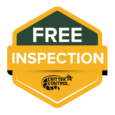Can you please describe the most common wildlife issues in your area? In Torrance and the surrounding Southern California communities, homeowners most frequently encounter issues with:
Rodents (Rats and Mice): Norway rats and Roof rats are extremely common. They seek food, water, and shelter indoors, often nesting in attics, crawl spaces, wall voids, and kitchens. They can cause significant damage by gnawing on wires (creating fire hazards), insulation, and structures, and can contaminate food and spread diseases.
Raccoons: Highly adaptable and intelligent, raccoons often den in attics, chimneys, or under decks. They are notorious for raiding trash cans, damaging soffits or vents to gain entry, destroying insulation for nesting, and carrying diseases like distemper and roundworm.
Opossums: Often found seeking shelter under porches, decks, or sheds, and sometimes entering garages or attics. While generally non-aggressive, they are known for raiding trash, stealing pet food, and can carry parasites.
Skunks: Primarily known for their potent defensive spray, skunks often burrow under homes, decks, or sheds, which can lead to persistent odors. They may also dig up lawns looking for grubs.
Birds (Pigeons, Sparrows): Pigeons frequently roost and nest on ledges, eaves, and commercial signage, creating unsightly messes with their droppings, which can damage property and pose health risks. Sparrows may nest inside vents (dryer vents, stove vents), causing blockages and fire hazards.
Squirrels: Tree squirrels can become a nuisance if they enter attics or crawl spaces to nest, often gnawing on wood, wires, and insulation.
How do the seasons affect nuisance wildlife activity in your area? Southern California’s relatively mild climate means wildlife is active year-round, but their behaviors shift with the seasons:
Spring (March-May): This is peak breeding season for many animals like raccoons, opossums, and squirrels. Expect increased activity as they seek safe, quiet places (like your attic or crawl space) to raise their young. Noise complaints often rise during this time.
Summer (June-August): Young animals born in the spring begin to venture out. Extreme heat can drive wildlife to seek cooler, shaded areas, sometimes leading them under decks or into garages. Focus shifts towards finding reliable water sources. Insects are abundant, attracting skunks and other insectivores.
Fall (September-November): As temperatures begin to slightly cool and food sources potentially change, animals may look for warm, secure places to spend the winter months. Rodent activity often increases indoors during this period as they seek shelter and stockpile food. Raccoons and squirrels are actively foraging.
Winter (December-February): While Torrance winters are mild, cooler temperatures and rain can still drive wildlife indoors seeking warmth and shelter. Rodents, raccoons, and opossums are common intruders during this time. Food may be scarcer, leading them to explore human structures more readily.
What are some common signs of nuisance wildlife activity? Be alert for these tell-tale signs:
Noises: Scratching, scurrying, gnawing, thumping, or chirping sounds, especially in walls, ceilings, attics, or under floors. Often heard at night (raccoons, rodents, opossums) or early morning/dusk (squirrels).
Droppings & Urine: Feces or urine stains found in attics, crawl spaces, garages, kitchens, along walls, or near nesting sites. Odors may also be present.
Damage: Gnaw marks on wood, wires, pipes, or stored items. Torn insulation, damaged soffits, vents, or screens. Holes in walls or foundations. Tipped-over trash cans. Dug-up areas in the lawn or garden.
Nests: Accumulations of shredded materials like insulation, paper, leaves, or twigs in secluded areas (attics, wall voids, under appliances, behind boxes).
Tracks & Smudges: Footprints on dusty surfaces or grease marks/rub stains along walls or near entry points where animals frequently travel.
Odors: Persistent musky smells (raccoons, rodents), ammonia-like odors (urine), or the distinct smell of a skunk. A foul odor could indicate a deceased animal.
Visual Sightings: Seeing animals frequently on your roof, near potential entry points, or repeatedly in your yard, especially nocturnal animals seen during the day.
Any prevention or exclusion tips for residents in your area? Proactive prevention is key to keeping wildlife out:
Seal Entry Points: Regularly inspect your home’s exterior for gaps or holes. Seal cracks in the foundation, gaps around utility pipes/wires, and openings in eaves or soffits using sturdy materials like steel wool, hardware cloth (1/4 inch mesh), metal flashing, or expanding foam sealant.
Cap Chimneys & Vents: Install chimney caps and secure screens over attic, roof, kitchen, and dryer vents to prevent animal entry. Ensure vent covers are intact and functioning.
Secure Trash: Use trash cans with tight-fitting, secured lids. Store bins in a garage or shed if possible, and only put them out on collection day. Clean bins regularly.
Eliminate Food Sources: Don’t leave pet food or water bowls outside overnight. Clean up fallen fruit from trees promptly. If using bird feeders, keep the area underneath clean or consider removing them if they attract nuisance wildlife like rodents or raccoons.
Maintain Landscaping: Trim tree branches at least 6-8 feet away from your roofline to prevent easy access for squirrels and raccoons. Keep shrubs and vegetation near the foundation trimmed back. Store firewood piles away from the house.
Secure Under Decks/Porches: Install sturdy hardware cloth around the base of decks, porches, and sheds, burying it several inches below ground level to prevent animals from digging underneath.
When should homeowners call you? While prevention is ideal, sometimes wildlife problems require professional help. Call Critter Control of Torrance if:
– You suspect wildlife is living in your attic, walls, chimney, or crawl space.
– You hear persistent noises (scratching, scurrying, thumping) inside your home.
– You find signs of damage (gnawing, torn vents, damaged insulation).
– You discover droppings or notice strong, unusual odors.
– You feel unsafe or unsure how to handle the situation (especially with animals like skunks or raccoons).
– DIY trapping or exclusion methods have failed.
– You need help identifying entry points and implementing permanent exclusion solutions.
– You require cleanup and decontamination of affected areas.
Our trained technicians can safely and humanely remove nuisance wildlife, repair damage, and implement effective strategies to prevent future intrusions.
This franchise is independently licensed and operated by Critter Solutions Group, LLC, dba Critter Control of Torrance.


